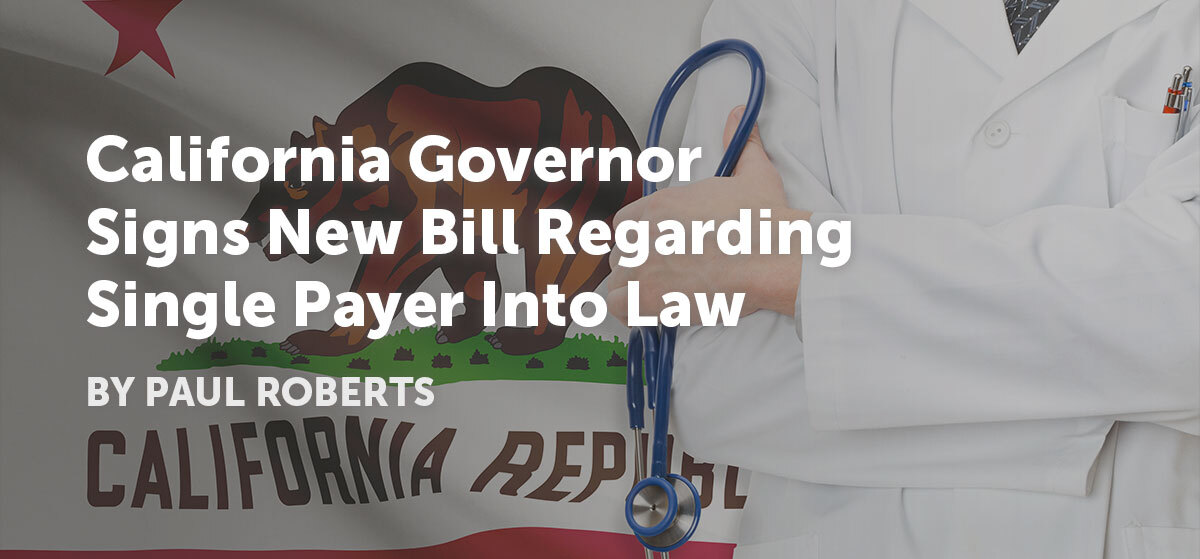California Governor Signs New Bill Regarding Single Payer into Law
.jpg?width=850&height=395)
California governor Gavin Newsom signed SB 770, a bill related to Single Payer health care in California in October 2023. The bill does not create a Single Payer health system in California, and it does not detail any components of what the system would entail. Instead, it focuses entirely on obtaining federal funding for a state-run single-payer health care system in California. It is intended to be the first of many steps toward financing such a system in California.
A California Single Payer health system would replace all existing health care operations and health insurance organizations within the state as we know them today. The system would replace all existing health care systems with one system to access, receive, and pay for health care. This means that everyone in the state would have health coverage through a single government-run program, with no other options.
Under a California Single Payer system, based on what has been previously proposed in prior pieces of unsuccessful legislation, the state government would be responsible for negotiating prices with health care providers, establishing hospital and provider systems, and paying for all covered services, including doctors’ visits, hospital stays, prescriptions drugs, preventive care, dental care, vision care, long term care, and more. It would eliminate and nullify all group health coverage, Original Medicare coverage, Medicare Advantage plans, Medi-Cal (Medicaid) coverage, and the insurance professionals, brokers, agents, and agencies that support them. While full details of how the system would operate have not yet been vetted, costs of such a proposal are estimated to be around $500-600 billion per year. For comparison, the current California state budget for 2024 is approximately $330 billion.
SB 770 requires the California Health and Human Services (HHS) Secretary to develop a plan to request federal Medicare and Medicaid waivers from the White House. If granted, the waivers would divert all Medicare and Medicaid funding to California, so it can finance part of its prospective statewide Single Payer health care system. It would eliminate those programs entirely in California. According to the Kaiser Family Foundation’s most-recent 2021 data, approximately 6.5 million Californians are covered by a Medicare plan. And approximately 14.2 million are covered by Medi-Cal (Medicaid) in California, as of June 2023. The Medi-Cal number is expected to increase significantly beginning in 2024, when undocumented adults ages 26-49 become newly eligible for Medi-Cal regardless of their immigration status.
The new law requires California HHS to develop its waiver proposal by June 1, 2025, which will be subject to a 45-day public comment period. A report on the final waiver proposal is due to be completed by November 1, 2025, at which point, the federal government may be approached for such waivers.
Word & Brown, the California Agents and Health Insurance Professionals (CAHIP) association, National Association of Benefits and Insurance Professionals (NABIP), and related groups and coalitions will be active participants in all related opportunities for engagement during the waiver creation process and for any subsequent legislation.
The Biden administration has been a loud proponent of preserving Medicare for seniors and has been vocal about building upon the existing Affordable Care Act. A Republican administration is also unlikely to entertain discussions for a Single Payer health care system in California. Even in the improbable event that the federal government grants the sought-after waivers, California would still need to find an additional $300 billion per year to finance the rest of its Single Payer system – in addition to the taxes Californians are already paying.
As of this column’s posting, there is a separate bill, AB 1690, which would detail the plans and operations for the Single Payer system in California. However, it is a “spot bill,” which is a virtually blank placeholder bill that can be revisited in January. It merely states California’s intent to create a “comprehensive universal Single Payer health care program,” void of any details or financing mechanisms.
Furthermore, additional Single Payer health care bills may be introduced in January 2024, which is relatively likely. The long-term sponsors of Single Payer legislation in California have indicated further movement and legislation in January should be expected.
Word & Brown will continue its work with CAHIP, NABIP, coalition partners, industry partners, et. al., as these bills unfold when the California legislature reconvenes in 2024. Stay tuned for future updates.
California health insurance brokers, agents, and insurance professionals are encouraged to get involved with California Agents and Health Insurance Professionals (CAHIP), as the association works closely with the legislature on these proposals and advocates for alternate approaches to universal coverage in California, such as preserving private health care options for Californians – including group health coverage, Medicare, Medicare Advantage plans, and Medi-Cal.
Most Recent Articles
Technology
Carrier Updates

